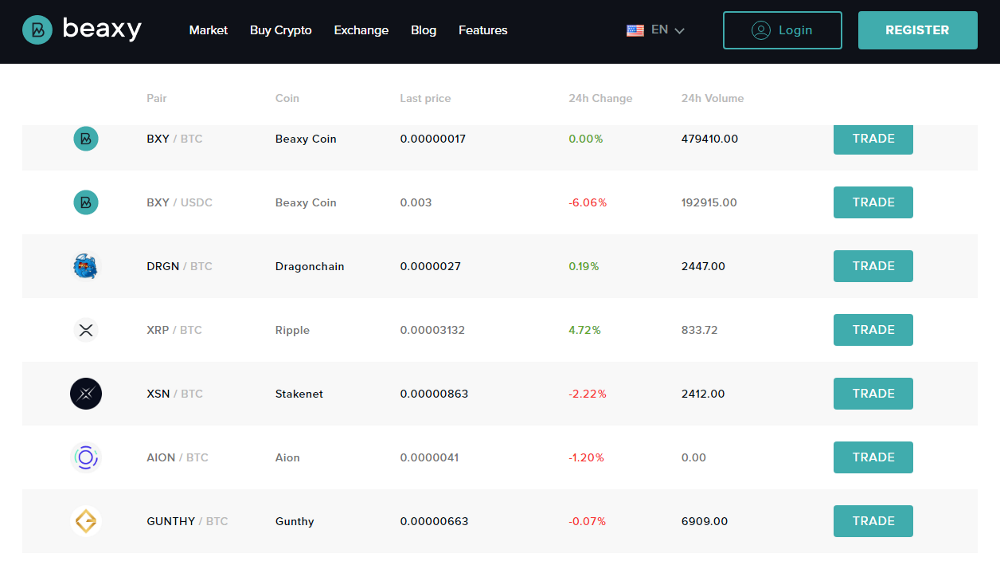The top of the upper shadow is the high of the day session and the bottom of the lower shadow is the low of the day session. Candle chart analysis has been used since the 18th century by Japanese rice traders to predict the rice price’s movement. According Forex Brokers to sources, a famous trader named Homma has discovered that studying market emotions could be useful to determine future trends and has developed the candlestick chart. A bullish reversal pattern consisting of three consecutive long white bodies.
Candlesticks, where the close is less than the open, indicate selling pressure. The powerful fact is that candle charts will often provide reversal signals earlier, or not even available with traditional bar charting techniques. For instance, a tall upper shadow shows the market rejected higher prices while a long lower shadow typifies a market that has tested and rejected lower prices. Essentially, the sellers are stepping back before pushing the market back down once more. This allows buyers to control three sessions, but they’re unable to muster enough momentum to break the first candle’s opening price. In a bearish harami, a long green session is followed by a smaller red one.
- Finally, when you see a stock forming a bullish piercing pattern while it is also forming a chart pattern, take note.
- The black candlestick with the long lower shadow marked support, but the body was too big to qualify as a hammer.
- KEY REVERSAL DAY is a one-day chart pattern where prices sharply reverse during a trend.
- The overall setup continues to hint the path of least resistance leads downward, with initial support marked by the 23.6% Fibonacci extension at $84.61.
- The high and the low are obvious and indisputable, but candlesticks cannot tell us which came first.
However, sellers later forced prices down from their highs, and the weak close created a long upper shadow. Conversely, candlesticks with long lower shadows and short upper shadows indicate that sellers dominated during the session and drove prices lower. However, buyers later resurfaced to bid prices higher by the end of the session and the strong close created a long lower shadow.
After a decline, or long black candlestick, a doji signals that selling pressure is starting to diminish. Doji indicate that the forces of supply and demand are becoming more evenly matched and a change in trend may be near. Doji alone are not enough to mark a reversal and further confirmation may be warranted. An EVENING STAR pattern is a 3 candle bearish reversal pattern that occurs at the end of an uptrend .
Finance Netcapital platform looks to connect investors with early-stage… These files may NOT be shared or resold in any way, shape, or form. Candlesticks are a great way to get confirmation on when to enter or exit a trade once you have done your Technical Analysis of the trade. This seller consistently earned 5-star reviews, dispatched on time, and replied quickly to any messages they received. Etsy is no longer supporting older versions of your web browser in order to ensure that user data remains secure. For more information about plotting indicators, see Plotting Indicators.
candlestick chart
A reversal pattern that can be bearish or bullish, depending upon whether it appears at the end of an uptrend or a downtrend . The first day is characterized by a small body, followed coinspot review by a day whose body completely engulfs the previous day’s body. A continuation pattern with a long, black body followed by another black body that has gapped below the first one.
A $20 stock could form a doji with a 1/8 point difference between open and close, while a $200 stock might form one with a 1 1/4 point difference. Determining the robustness of the doji will depend on the price, recent volatility, and previous candlesticks. Relative to previous candlesticks, the doji should have a very small body that appears as a thin line. Steven Nison notes that a doji that forms among other candlesticks with small real bodies would not be considered important. However, a doji that forms among candlesticks with long real bodies would be deemed significant. Candlestick patterns are used in day trading in pretty much exactly the same way as anywhere else – spot a pattern form on a market, confirm the resulting move and open your trade.
This pattern is somewhat similar to the Abandoned Baby Bearish with the difference that the shadows are overlapping. However the pattern has a high level of reliability and suggests that the bears are definitely in charge by the third black day. The Evening Doji Star Bearish is the confirmation of the bearish Doji Star pattern. The third day is a black day that gaps downward and trades into the body of the previous day. The fourth day is a black Marubozu engulfing the third day. A long black body is followed by three small body days, each fully contained within the range of the high and low of the first day.

In technical analysis a candlestick pattern is a movement in prices shown graphically on a candlestick chart that some believe can predict a particular market movement. The inverted hammer, long white candlestick and marubozu show increased buying pressure rather than an actual price reversal. With its long upper shadow, an inverted hammer signifies intra-session buying interest that faded by the finish. Even though the security finished well below its high, the ability of buyers to push prices higher during the session is bullish. The long white candlestick and white marubozu signify sustained buying pressure in which prices advanced sharply from open to close.
Bullish candlestick patterns
This pattern is similar to the Hanging Man but the shadow is an upper instead of a lower one. The shooting star occurs when the day has a body, although very small. When the open and the close are the same, the pattern becomes the Gravestone Bearish. This is an extreme case of spinning stop where the body exists as a line, meaning that the day’s open and close are the same.
As with the dragon fly doji and other candlesticks, the reversal implications of gravestone doji depend on previous price action and future confirmation. Even though the long upper shadow indicates a failed rally, the intraday high provides evidence of some buying pressure. After a long downtrend, long black candlestick, or at support, focus turns to the evidence of buying pressure and a potential bullish reversal. After a long uptrend, long white candlestick or at resistance, focus turns to the failed rally and a potential bearish reversal. Bearish or bullish confirmation is required for both situations.
The long lower shadow of the Hammer signals a potential bullish reversal. As with the Hammer, both the Bullish Engulfing Pattern and the Piercing Pattern require bullish confirmation. The two candlesticks can be any combination of white and black.
▶Live Trading
The next day closes below the midpoint of the body of the first day. The Inverted Hammer and Shooting Star look exactly alike, but have different implications based on previous price action. Both candlesticks have small real bodies , long upper shadows and small or nonexistent lower shadows. These candlesticks mark fusion markets review potential trend reversals, but require confirmation before action. The hollow or filled portion of the candlestick is called “the body” (also referred to as “the real body”). The long thin lines above and below the body represent the high/low range and are called “shadows” (also referred to as “wicks” and “tails”).
Each of the ‘soldiers’ should have a longer body that the last, as buying momentum builds. Tweezer bottoms are easy to spot, as they look like a pair of tweezers. However, they don’t appear as often as some of the other patterns covered here. A spinning top looks a lot like a long-legged doji but with a slightly wider body. One should usually buy on a green candle day and sell on a red candle day.

After a long decline a long black candlestick can indicate panic or capitulation. If buying gets too aggressive after a long advance, it can lead to excessive bullishness. As such, do not stock trade based on the limited information. The goal of this section is to illustrate how candles can open new and unique analytical doors, not to provide a trading methodology.
It is a very common pattern and can occur even within a trend, making it essential to study other cues such as volume and support/resistance. KEY REVERSAL DAY is a one-day chart pattern where prices sharply reverse during a trend. The first two days illustrate a bearish Engulfing pattern which composes of a first small white day and a second long black day that engulfs the first day. The third day is a long black day that closes lower than the first day. The second, third and fourth day have small bodies that attempt to initiate a short uptrend but still within the range of the first black long day body. On the fifth day, the bears come in strong and the stock closes at its lowest point of the pattern.
Trade Triangles
If the stock explodes, and goes up 15% in a couple of days, at least take partial profits and trail your stops on the rest. A long day represents a large price move from open to close, where the length of the candle body is long. A Doji where the open and close price are at the high of the day. Like other Doji days, this one normally appears at market turning points.
The red candle is entirely within the open and close of the first period. You might spot tweezer tops in market that isn’t currently trending. They’re still considered a bearish signal, but not as strong as during an uptrend. The second session brought a swift change of tide, initially opening higher but quickly falling as bears take over. As more and more sellers pile into the market, supply rises and demand falls – marking the beginning of a possible new downtrend. A hanging man looks exactly like a hammer but appears at the end of an uptrend.
All our indicators have Built-In Help integrated into the product. Static decimalGetUpperShadow Returns the range of the candle’s upper shadow More… Also keep in mind that those traders that shorted this stock on the day of the breakdown probably put their stop loss orders above the consolidation.
After a decline, the appearance of a doji or spinning top denotes a sudden letup in selling pressure. A stand-off has developed between buyers and sellers, and a support level may form. The pattern bears the image of a hammer with a small body, either black or white, and a low shadow at least twice the length of the body. The sell off occurs by a downtrend gap but the stock manages to close near its opening, signaling a weakening of the bearish sentiment. A confirmation on the next day is needed for a bullish trend reversal.
To resistance around 57, the stock declined sharply and again found support around 46 . The black candlestick with the long lower shadow marked support, but the body was too big to qualify as a hammer. The long, upper shadow of the Shooting Star indicates a potential bearish reversal. As with the Shooting Star, Bearish Engulfing, and Dark Cloud Cover Patterns require bearish confirmation.
“We’re investing a lot of resources,” said NHTSA acting head Ann Carlson in comments to reporters on the sidelines of an event in Washington. Volume is not important but you may see high volume on the breakdown candle. This means that there are no sellers left to move this stock lower. So, with all sellers flushed out, this stock can now move higher. Small-cap stocks could play a big role in revitalizing the stock…